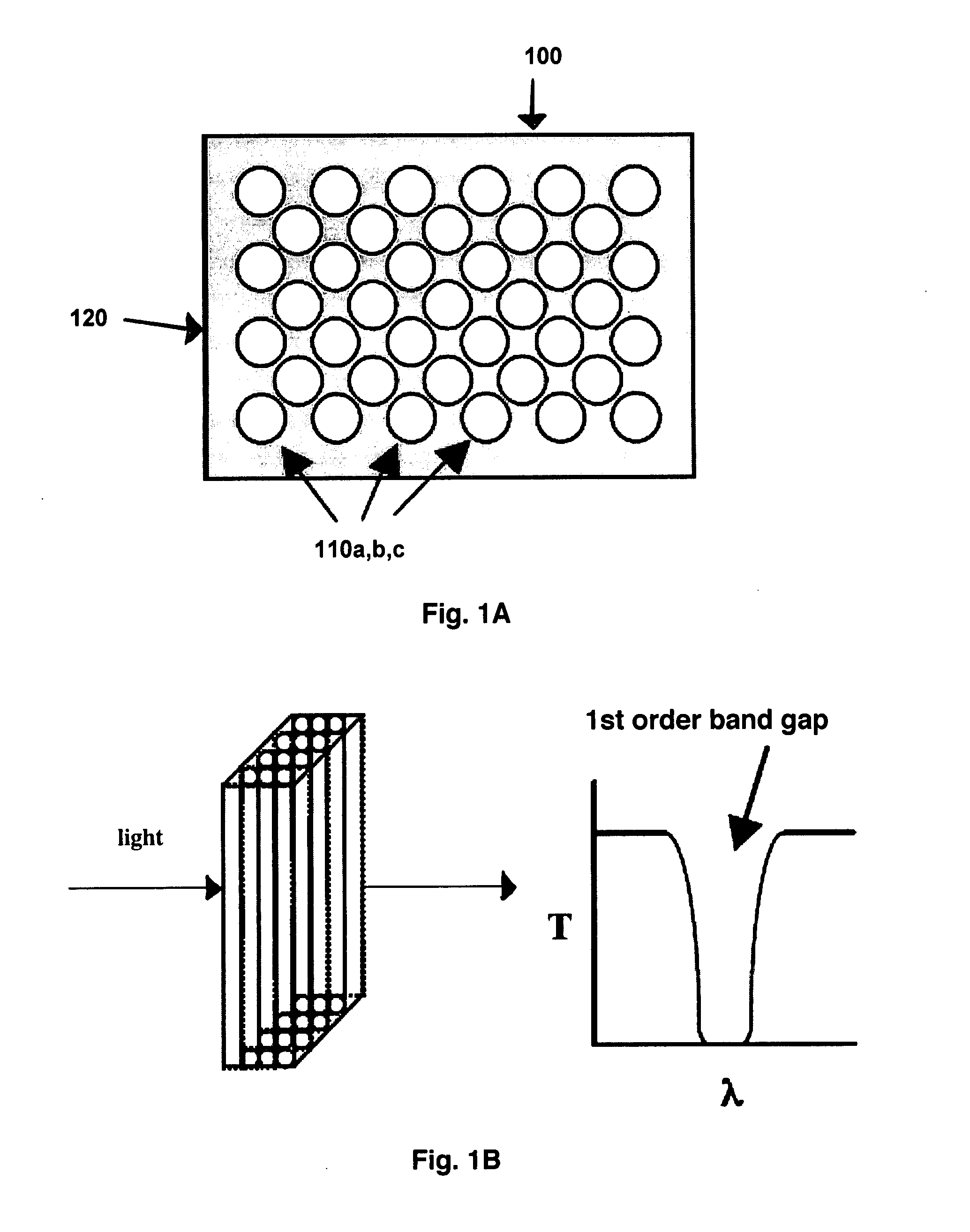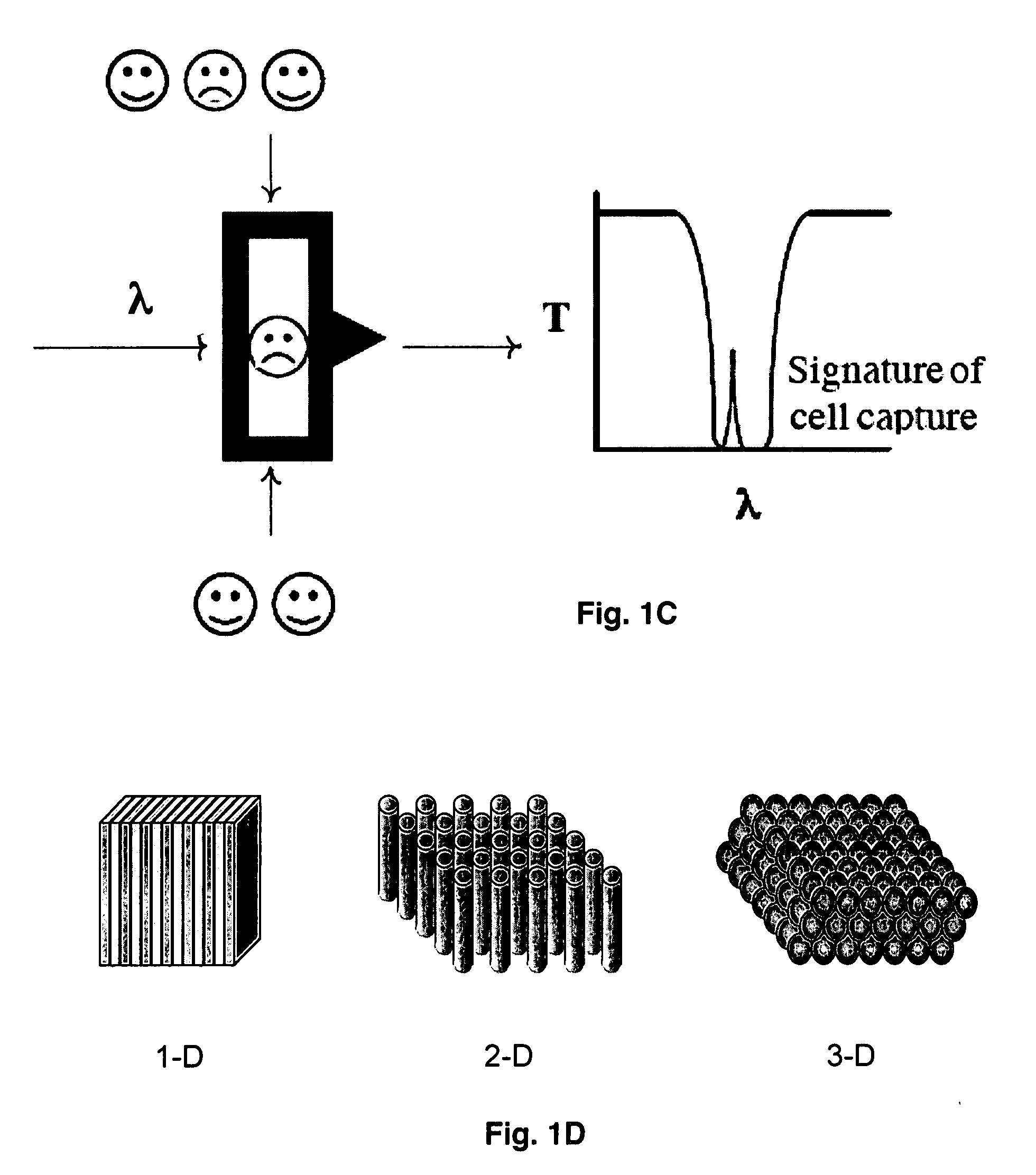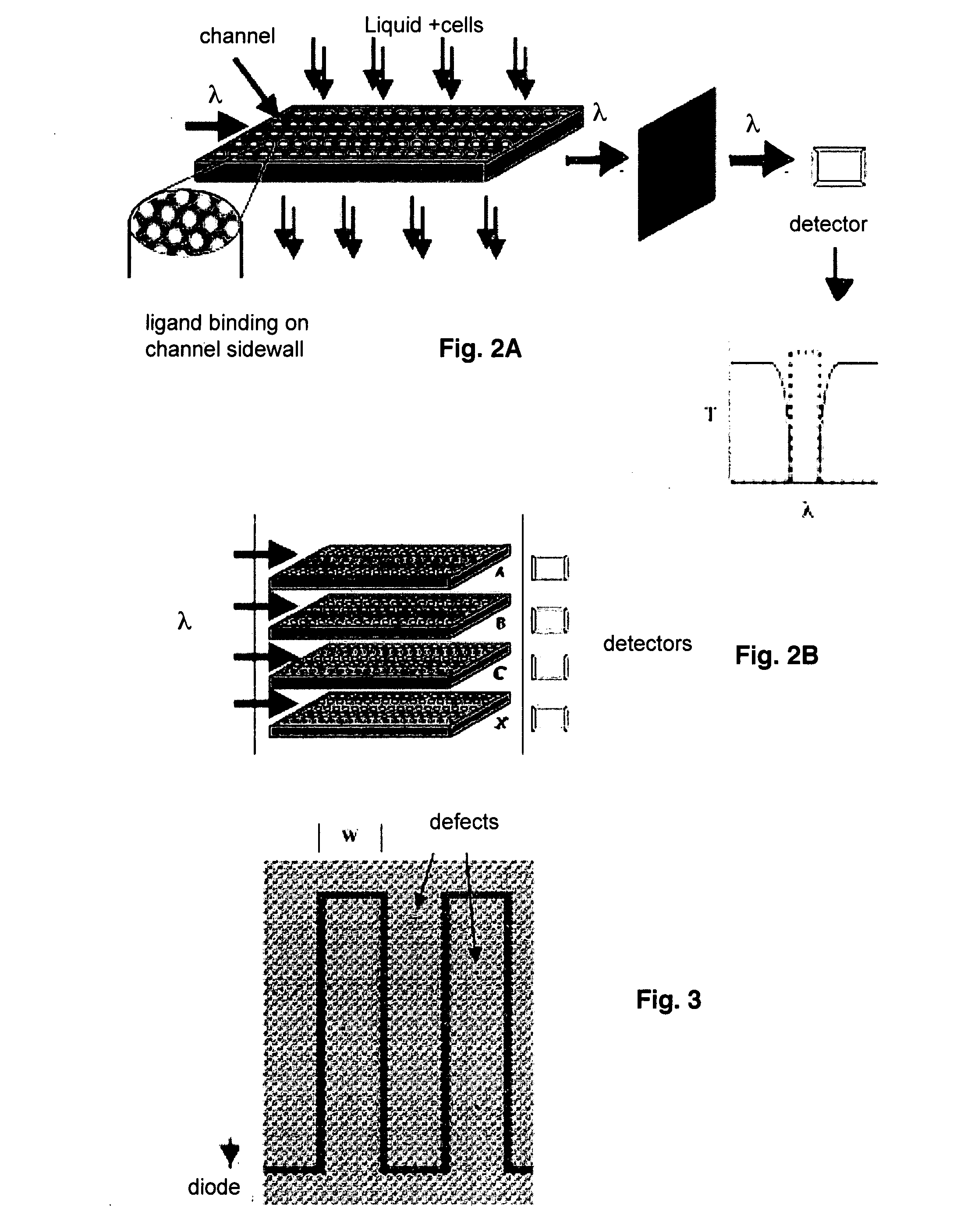Real Time Detection of Molecules, Cells and Particles Using Photonic Bandgap Structures
a photonic bandgap and real-time detection technology, applied in the field of molecular biology, biochemistry, genomics, nanotechnology and analytical chemistry, can solve the problems of limiting the widespread use of photonic bandgap sensors, high cost of complex instruments, and inability to meet the needs of specific applications
- Summary
- Abstract
- Description
- Claims
- Application Information
AI Technical Summary
Benefits of technology
Problems solved by technology
Method used
Image
Examples
example 1
Real Time Detection of Cells Using Photonic Bandgap Structures
[0049]The observation of photonic crystal defects optically depends upon the orientation of the photonic crystal and the direction of observation. For the devices described in these Examples, detection of defect structures is either along an axis of high symmetry, exhibiting the simplest band structure or vertically, perpendicular to a high symmetry axis for high throughput devices. The operation of a 2-dimensional PBG structure to detect a cell, such as a bacterium or lymphocyte is shown in FIGS. 1A-1C. FIG. 1D shows various possible geometries, i.e., 1-, 2- and 3-dimensional, of PBG structures.
[0050]FIG. 1A shows a 2-dimensional hexagonal close packed structure 100 containing uniform holes 110a,b,c or channels in a dielectric matrix 120. The dielectric medium is considered transparent in the region of interest. The holes represent approximately 40 percent open area for the region containing them. Such a structure would ...
example 2
Real Time Detection of Spherical or Cyllindrical Particles Using Photonic Bandgap Structures
[0063]If the rod in Example 1 were replaced by a sphere of diameter slightly smaller than that of the channels of the PBG structure, a similar transmission of light is induced within the band gap while the sphere resides within the PBG structure. For this example it is assumed that the length of the channel is also on the same order as the diameter of the channel. The side walls of the PBG channels and spheres may be chemically modified to provide a thin coating of specific binding reagents. The specific binding reaction causes a particular surface modified sphere to stick to the side wall of the channel as it passes through the PBG structure preventing the sphere from moving out of the channel. As in Example 1, a photo detector may be utilized to detect capture of a sphere within the PBG structure indicating a binding reaction has taken place. Spheres lacking the specific chemical modificati...
example 3
[0064]Use of “Reporter Particles” to Detect Smaller Objects or Substances
[0065]The binding reaction between the surface of the channel and a spherical or cylindrical particle in Example 2 may be modified to provide a particularly useful embodiment of the PBG sensor device, in which a “reporter particle” is provided which functions to detect much smaller substances. The side walls of the PBG channels are chemically modified with a thin reactive coating of type A and the surface of the spherical or cylindrical “reporter particle” is chemically modified by a thin reactive coating of type B. The coatings A and B are selected to be nonreactive, i.e., do not bind, to each other, but so bind specifically to separate sites on a third molecule, cell, particle or other substance of interest, e.g., the analyte, whose dimensions are small compared to the channel and reporter particle diameters.
[0066]If a reporter particle coated with reagent B is introduced into the PBG structure, it will pass ...
PUM
| Property | Measurement | Unit |
|---|---|---|
| length | aaaaa | aaaaa |
| diameter | aaaaa | aaaaa |
| diameter | aaaaa | aaaaa |
Abstract
Description
Claims
Application Information
 Login to View More
Login to View More - R&D
- Intellectual Property
- Life Sciences
- Materials
- Tech Scout
- Unparalleled Data Quality
- Higher Quality Content
- 60% Fewer Hallucinations
Browse by: Latest US Patents, China's latest patents, Technical Efficacy Thesaurus, Application Domain, Technology Topic, Popular Technical Reports.
© 2025 PatSnap. All rights reserved.Legal|Privacy policy|Modern Slavery Act Transparency Statement|Sitemap|About US| Contact US: help@patsnap.com



